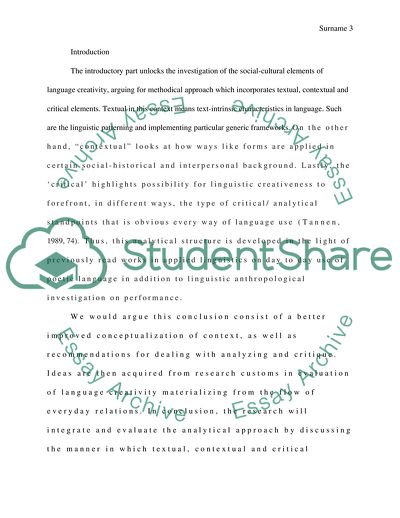Cite this document
(Creativity in Ordinary Lanaguage Research Proposal Example | Topics and Well Written Essays - 2250 words, n.d.)
Creativity in Ordinary Lanaguage Research Proposal Example | Topics and Well Written Essays - 2250 words. https://studentshare.org/humanitarian/1822688-creativity-in-ordinary-lanaguage
Creativity in Ordinary Lanaguage Research Proposal Example | Topics and Well Written Essays - 2250 words. https://studentshare.org/humanitarian/1822688-creativity-in-ordinary-lanaguage
(Creativity in Ordinary Lanaguage Research Proposal Example | Topics and Well Written Essays - 2250 Words)
Creativity in Ordinary Lanaguage Research Proposal Example | Topics and Well Written Essays - 2250 Words. https://studentshare.org/humanitarian/1822688-creativity-in-ordinary-lanaguage.
Creativity in Ordinary Lanaguage Research Proposal Example | Topics and Well Written Essays - 2250 Words. https://studentshare.org/humanitarian/1822688-creativity-in-ordinary-lanaguage.
“Creativity in Ordinary Lanaguage Research Proposal Example | Topics and Well Written Essays - 2250 Words”. https://studentshare.org/humanitarian/1822688-creativity-in-ordinary-lanaguage.


